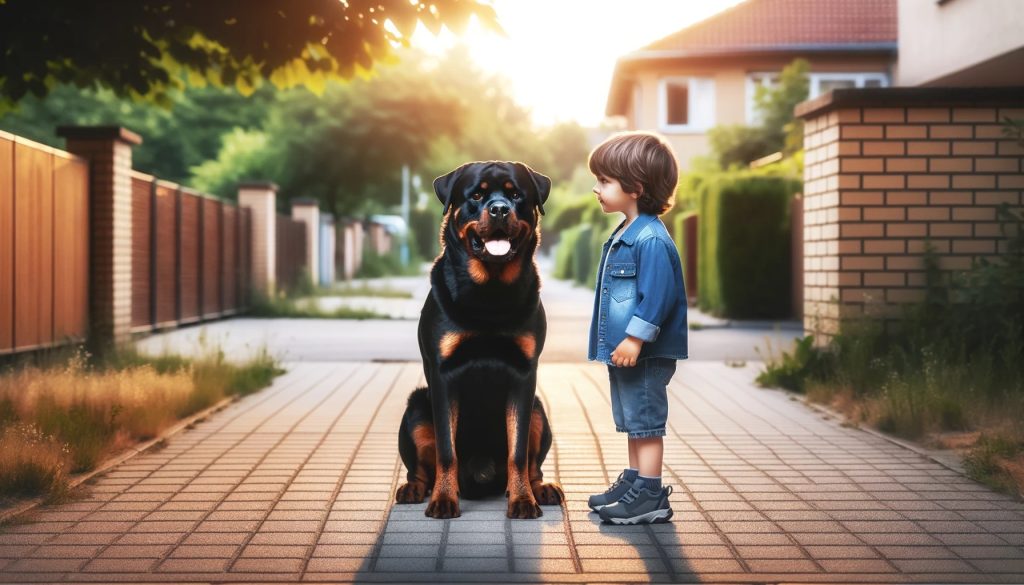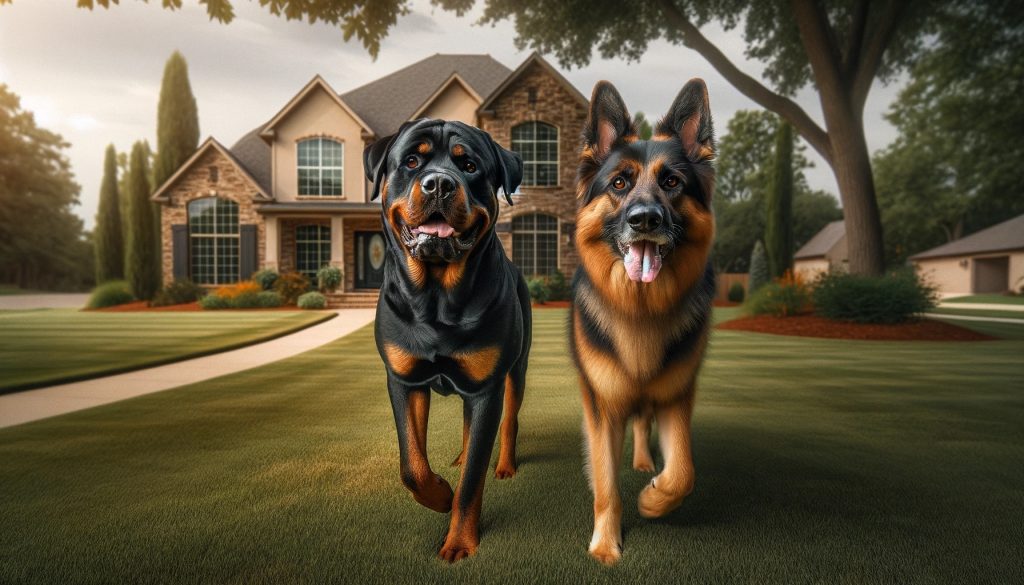Rottweilers are known for their protective nature, but at what age do they start displaying aggressive behavior? According to multiple sources, most Rottweilers begin to show signs of aggression around 2 years old. However, the exact age may vary from dog to dog. It is important to note that Rottweilers only protect what they consider theirs, so they need to trust and bond with their owner before being protective. Care, attention, and training can help develop this protective instinct and manage any aggressive tendencies in Rottweilers.
Key Takeaways:
- Rottweilers typically start showing signs of aggression around 2 years old.
- Building trust and bonding with your Rottweiler is crucial for their protective instincts.
- Care, attention, and training can help manage aggressive tendencies in Rottweilers.
- Aggression in Rottweilers can vary from dog to dog.
- Consulting with a professional dog trainer or behaviorist is recommended for managing and preventing aggression in Rottweilers.
Understanding Aggression Development in Rottweilers
Aggression in Rottweilers can be influenced by various factors, including genetics, socialization, and training. It is important to understand that aggression does not necessarily mean a dog is dangerous or uncontrollable. Some Rottweilers may show aggressive tendencies due to their natural temperament, but with proper management and training, these behaviors can be controlled.
Socialization from a young age is crucial to help Rottweilers develop appropriate behavior around other dogs and humans. By exposing them to different people, animals, and environments early on, you can help them become well-adjusted and less likely to exhibit aggressive behavior. This exposure allows them to learn proper social cues and understand boundaries.
Training plays a vital role in managing aggression in Rottweilers. Positive reinforcement methods can be used to reward desired behaviors while redirecting and discouraging aggressive behaviors. With consistent training and patience, Rottweilers can learn to control their impulses and respond appropriately to various situations.
It is important to consult with a professional dog trainer or behaviorist for guidance on managing and preventing aggression in Rottweilers. They can provide expert advice tailored to your specific dog’s temperament and needs. This professional guidance, along with your dedication and commitment, can go a long way in promoting a well-behaved and balanced Rottweiler.
Preventing Aggression in Rottweilers
While Rottweilers may have a natural inclination towards guarding and protective instincts, it is crucial to take steps to prevent and manage aggressive behavior. By focusing on proper socialization, early training, and providing a safe and structured environment, you can greatly reduce the likelihood of aggression in your Rottweiler.
Early exposure to different people, animals, and environments is key in helping your Rottweiler become well-adjusted and less likely to exhibit aggressive tendencies. Introduce your dog to a variety of situations and ensure positive interactions, promoting confidence and reducing fear-based aggression.
Ongoing training and reinforcement of desired behaviors are essential in maintaining a calm and well-behaved Rottweiler. Use positive reinforcement techniques, rewarding good behavior with treats or praise, and avoiding punishment-based training methods that can exacerbate aggression. Consistency and patience are crucial in successfully managing and preventing aggression in Rottweilers.
If you are unsure about how to handle aggression in your Rottweiler, it is highly recommended to consult with a professional dog trainer or behaviorist. They can provide expert guidance tailored to your dog’s specific needs and help you create a customized training plan to address and prevent aggression. Remember, with the right approach and appropriate training, you can help your Rottweiler become a well-rounded and balanced companion.





